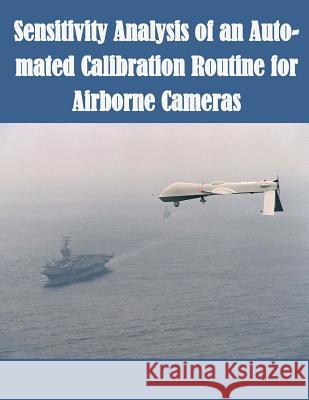Sensitivity Analysis of an Auto-mated Calibration Routine for Airborne Cameras » książka
Sensitivity Analysis of an Auto-mated Calibration Routine for Airborne Cameras
ISBN-13: 9781500891022 / Angielski / Miękka / 2014 / 120 str.
Sensitivity Analysis of an Auto-mated Calibration Routine for Airborne Cameras
ISBN-13: 9781500891022 / Angielski / Miękka / 2014 / 120 str.
(netto: 57,45 VAT: 5%)
Najniższa cena z 30 dni: 60,00 zł
ok. 16-18 dni roboczych
Bez gwarancji dostawy przed świętami
Darmowa dostawa!
Given a known aircraft location, a set of camera calibration parameters can be used to correlate features in an image with ground locations. Previously, these calibration parameters were obtained during preflight with a lengthy calibration process. A method to automate this calibration using images taken with an aircraft mounted camera and position and attitude data is developed. This thesis seeks to determine a partial set of circumstances that affect the accuracy of the calibration results through simulation and experimental flight test. A software simulator is developed in which to test an array of aircraft maneuvers, camera orientations, and noise injection. The simulator uses a realistic aircraft model in order to accurately derive the inputs to the calibration routine. Features are generated and used to create a set of fictitious images to feed the calibration routine. Results from the simulation are used to prepare test points for an experiment flight test conducted to validate the calibration algorithm and the simulator. Real world flight test methodology and results are discussed. Images of the ground along with precise aircraft navigation and time data were gathered and processed for several representative aircraft maneuvers using two camera orientations. Only the straight and level maneuver is found to be detrimental to accurate calibration results. Feature measurement noise is found to be highly detrimental to parameter estimation while navigation noise has little affect. These results are validated with both simulated and experimental results.
Zawartość książki może nie spełniać oczekiwań – reklamacje nie obejmują treści, która mogła nie być redakcyjnie ani merytorycznie opracowana.











